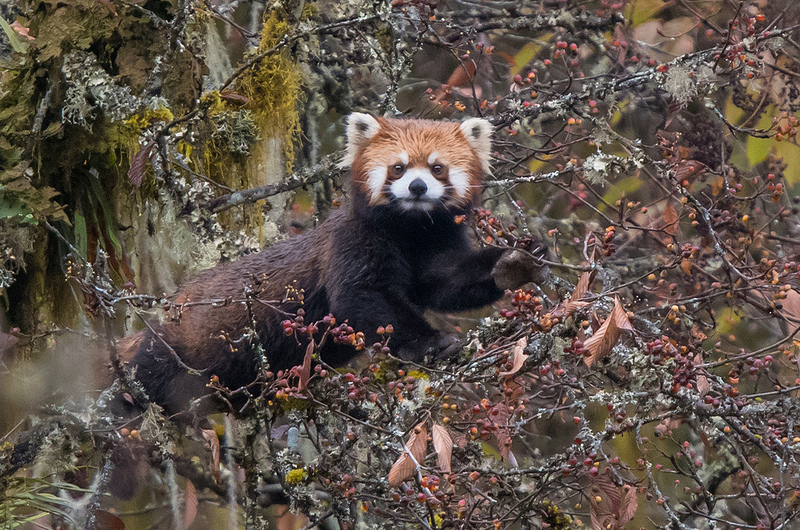
If you search Red Panda for images on the internet almost all are captive “zoo” animals. So it would appear that photos of genuine Red Pandas taken in the wild are pretty rare.
The Red Panda has been classified as endangered by IUCN since 2008 because there are fewer than 10,000 mature individuals and the population is decreasing. I photographed this wild Red Panda in Sichuan in China, where they occur in high altitude forests (3000m+) with a bamboo understorey. They feed mainly on bamboo shoots while they remain hidden in bamboo thickets. But in the autumn they emerge from the thickets to climb trees in search of berries, which makes them a bit easier to see. This one was feeding on berries when I photographed him and we timed the trip to coincide with the berry crop.
Because they have eye-patches, eat bamboo and live in the same areas, they were thought to be related to Giant Pandas but DNA has settled the issue. They are not bears, but are in a family all by themselves (Ailuridae) but that falls within the super family Musteloidae which includes Weasels, Otters, Skunks and Raccoons.
Incidentally, this is the eastern race Ailurus fulgens styani which is found in China and northern Burma. It is distinguished from the nominate race from Nepal and Bhutan by its thicker, blacker body fur. Eastern animals are more uniformly red.
[registration_form]
Tim, you don’t half get around – adventurously that is.
But I intrepidly half pander to the old joke:
The expression of this animal, is weasily identifiable as… sort of … Musteloidal.
The look of a real Panda is stoatily different.
Bam Boom.
(Alas, I may’ve got the shutter speed completely wrong on this).